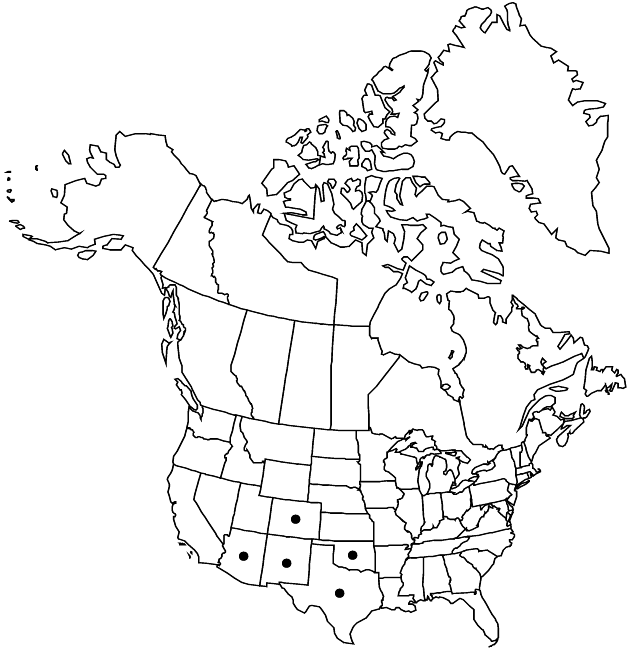Difference between revisions of "Solidago wrightii"
Proc. Amer. Acad. Arts 16: 80. 1881.
FNA>Volume Importer |
FNA>Volume Importer |
Revision as of 18:42, 24 September 2019
Plants 20–110 cm; caudices branched, thick, and woody or rhizomes short, woody. Stems 1–30+, simple, sparsely to densely puberulent proximally to densely so in arrays. Leaves: basal and proximal winged-petiolate-subpetiolate (poorly differentiated), blades to winged petioles; blades oblanceolate, largest to 8 cm, usually smaller, gradually attenuate, margins entire, slightly undulate, sparsely to moderately soft-puberulent, somewhat viscid (stipitate-glands very small); mostly withering by flowering, new rosettes sometimes present; cauline petiolate (petioles 0.5–1 mm), blades (linear) elliptic proximally to (narrowly) lanceolate or ovate distally, largest 50–80 × 15–25 mm, reduced distally and becoming more ovate, 15–20 mm in arrays, margins entire or serrulate. Heads 1–140, not secund, in thyrsiform-paniculiform arrays, sometimes compact, nearly as wide as tall, and rounded, sometimes appearing almost rounded corymbiform, proximal branches sometimes much elongate, not secund, spreading to ascending. Peduncles 0.5–5(–2.5) mm, densely short hispid-canescent, sparsely to densely stipitate-glandular, ± viscid; bracts small, grading into phyllaries. Involucres broadly campanulate, (3.5–)4–5(–5.5) mm. Phyllaries in 2–3 series, unequal, oblong to linear-lanceolate, acute to attenuate, sparsely to moderately strigose, especially distally, sparsely to densely stipitate-glandular, ± viscid. Ray florets 6–10; laminae ca. 3–5 × 1–2 mm. Disc florets 10–20; corollas 3–4 mm, lobes ca. 1 mm. Cypselae 1.5–2.5 mm, ± moderately short-strigose; pappi 3–4 mm. 2n = 18.
Phenology: Flowering Aug–Oct.
Habitat: Open oak-pine woods and rocky open slopes, disturbed ground
Elevation: 1000–2700 m
Distribution

Ariz., Colo., N.Mex., Okla., Tex., Mexico (Chihuahua, Durango, Sonora, Coahuila).
Discussion
In Texas, Solidago wrightii grows primarily in the trans-Pecos region. It is one of the few usually obviously stipitate-glandular, viscid goldenrods; the stipitate glands are minute when present on other species. Two varieties have been recognized on degree of glandularity; these grade into each other to such a degree that their recognition does not appear warranted. The few plants seen from northeastern New Mexico and westernmost Oklahoma are possible variants of S. petiolaris, but overall they fit better in S. wrightii. A detailed morphometric study of this and the next two species is needed to resolve ambiguous species limits on the western Great Plains.
Selected References
None.